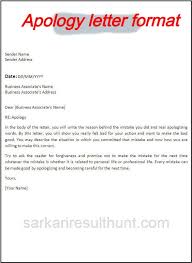We all make mistakes! However, sincerely apologising for your mistakes can make a positive difference.
An apology letter has similar components as a formal letter. Let us learn about the basic format of writing an apology letter.
1. Subject Line
The subject line is the display unit of your email. It tells about the content of your email and also helps the recipient to prioritize the emails. That is why it is important to come up with an appropriate and effective subject line for your email before sending it. If your apology does not get read on time, it loses its relevance a little. Following are some tips to write good subject lines.
- Go for a simple, specific, and relevant subject line.
You must not mention the entire episode for which you are seeking an apology. Just mentioning ‘Apology Letter’ as your subject line does the work. Apology letters are generally self-explanatory as the recipients are usually aware of the incidents. If you want to be a little more specific, you can simply add the reason in a few words, for example, ‘Apology letter for bad behavior’, ‘Apology letter for sending the wrong reports’, etc.
- Keep it short.
Do not use sentences as your subject line. Just a phrase is enough to set the tone for the email.
- Avoid making it misleading.
Make sure that the subject line is not misleading in any way. For example, if you are writing an email to apologize for an incident happened in the staff meeting, instead of writing ‘Regarding the staff meeting incident’, write ‘Apology Letter’ or ‘Apology Letter for inappropriate behavior’.
If you write ‘Regarding the staff meeting incident’, it doesn’t qualify to be an apology letter when one reads the subject line and misleads.
2. Salutation
Using appropriate salutations according to the relationship you have with the addressed person is important. Here are some examples of formal salutations.
- If you are apologising to a group, address the entire group. For example, Dear Team, Dear Team Members, Dear Finance Department, and so on.
- If you do not know the name of the addressed person, use Dear Sir/Madam, Dear HR Manager, and so on.
- For senior officials, mention the suitable title as well. For example, Dear Dr. Sahay, Dear Mr. Verma, Dear Ms. Swaroop Yadav, and so on
- With colleagues, you can be a little informal. But never forget that your email is official. Never miss the salutation and always be respectful. You can address them with just their first name. For example, Dear Shobhit, Dear Muskan, and so on.
3. Body of the email
Start your apology letter with apologising. The opening statement must set the tone for your email. Follow it with these apology letter tips such as giving a detailed account of the incident, acknowledging the mistake, taking responsibility for it, etc.
The closing of your apology email is equally important. It leaves an impression on the recipient at the end. Always close your apology letter on the note that you are available for more explanation and help if required.
4. Signature
Only sincere apologies are the effective ones. So, the best to sign off apology letters is with the phrase ‘Yours Sincerely’ being followed by your full name.
Include your contact information such as phone number, if needed. If you are apologising on behalf of your company, give the company’s contact information as well.
Writing a convincing apology letter is not very difficult if you have the right intentions. Take help from these ready-to-use apology letter samples for writing a perfect apology letter.
For more updates: Like us on Facebook and follow us on Twitter & Instagram





































